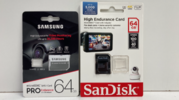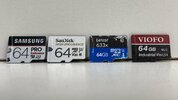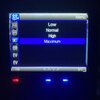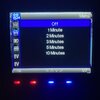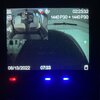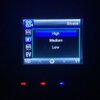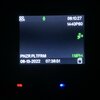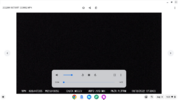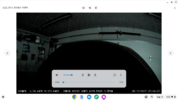It is quite normal for video cameras to still record in some segment size, often around 4 GB, this is the hardcoded into the fat 32 FAT system as the MAX file size it can handle, but i think this is also so with other file systems like exFAT.
It is also a issue of security like dashcams record in smaller segments so if a file corrupt you loose as little as possible.
My Osmo action camera do the very same if you record a long session.
I think it is hard to come up with any consumer camera that do not do this.
So Why do GoPros Cut the Video Files Up?
There are two overlapping parts to the answer. The first is that it’s a safety precaution. By splitting up the video it reduces the chance of you losing all your footage if the file gets corrupted somehow. It’s called
chaptering, and the idea is that if one chapter gets corrupted the others
should still be okay because they’re separate files. So you’ll lose one egg instead of the whole basket of them.
But there’s also a practical limitation. If GoPro’s didn’t break footage into chapters, you wouldn’t be able to shoot more than about 9 minutes of video at a time at the highest settings. That’s to maintain file system compatibility.
The newer models of GoPro use chapters of a maximum size of 4GB. Earlier models use
smaller sizes. That 4GB limit isn’t some random number they dreamed up. So why use that number and not, say 25GB? Or, like some cameras, no limit?
The answer has to do with maximum compatibility and the limitations of the filesystem used on your
memory card. By far the most widely compatible filesystem these days is known as
FAT32 (for 32-bit File Allocation Table).
FAT32 is quite old–Microsoft first rolled it out with Windows 95–and it lacks some of the sophistication and features of newer file systems such as exFAT. Nevertheless, it has things going for it: it’s reliable, it offers solid performance, and, most importantly, it is
very widely compatible.
That last point is crucial, because it means that you can put your memory card in pretty much any computer and be able to read it without having to install extra software. Whether you’re using Windows, Mac, or Linux, a FAT32 external hard drive or thumb drive or memory card should work. So nearly all consumer devices aim to be compatible with FAT32.
But FAT32 has a limitation hardcoded into it: the maximum file size that it can handle is 4GB. Back in Windows 95 days, that seemed pretty huge. These days, not so much.
If you’re recording high-definition video on a
GoPro HERO10 Black, for instance, you’re going to fill up 4GB pretty quickly. In some video modes that shoot at
up to 100 Mbps video bitrate, it’s as quick as seven or eight minutes. If you’re using smaller or lower quality settings, you’ll get more footage before you hit that 4GB threshold.
That’s why GoPro breaks its videos up. Once you get to 4GB, it’ll tie off that segment and start a new one. Once that new one gets to 4GB, it’ll start another. And so on, until you stop the recording, the card fills up, or your battery runs out.
A wrinkle is that GoPros don’t actually use FAT32 in every instance. And it’s quite technically possible for a camera to detect the filesystem and adjust its behavior. Some Fujifilm and Sony cameras, for instance, will save 4GB segments when a SDHC card is used (i.e., 32GB or smaller) but use a continuous stream when larger, SDXC cards, are used."

